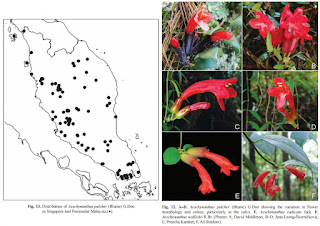 |
Fragilicetus velponi
Bisconti & Bosselaers, 2016
Figure 14. Artistic interpretation of possible interaction between a large shark and Fragilicetus velponi gen. et. sp. nov. as suggested by the shark bite marks on the skull of the holotype specimen.
The human in the upper right corner serves as a size reference. Illustration by Mark Bosselaers.
DOI: 10.1111/zoj.12370 |
Abstract
A new extinct genus, Fragilicetus gen. nov., is described here based on a partial skull of a baleen-bearing whale from the Early Pliocene of the North Sea. Its type species is Fragilicetus velponi sp. nov. This new whale shows a mix of morphological characters that is intermediate between those of Eschrichtiidae and those of Balaenopteridae. A phylogenetic analysis supported this view and provided insights into some of the morphological transformations that occurred in the process leading to the origin of Balaenopteridae. Balaenopterid whales show specialized feeding behaviour that allows them to catch enormous amounts of prey. This behaviour is possible because of the presence of specialized anatomical features in the supraorbital process of the frontal, temporal fossa, glenoid fossa of the squamosal, and dentary. Fragilicetus velponi gen. et sp. nov. shares the shape of the supraorbital process of the frontal and significant details of the temporal fossa with Balaenopteridae but maintains an eschrichtiid- and cetotheriid-like squamosal bulge and posteriorly protruded exoccipital. The character combination exhibited by this cetacean provides important information about the assembly of the specialized morphological features responsible for the highly efficient prey capture mechanics of Balaenopteridae.
Keywords: Belgium; feeding behavior; Fragilicetus; phylogeny; Pliocene
Systematic Palaeontology
Class Mammalia Linnaeus, 1758
Order Cetacea Brisson, 1762
Suborder Mysticeti Cope, 1891
Chaeomysticeti Mitchell, 1989
Balaenomorpha Geisler & Sanders, 2003
Superfamily Thalassotherii Bisconti, Lambert & Bosselaers, 2013
Epifamily Balaenopteroidea Flower, 1864
Family Balaenopteridae Gray, 1864
Fragilicetus gen. nov.
Diagnosis: The diagnosis of Fragilicetus includes the presence of eschrichtiid-like and balaenopterid-like features in the same individual. Fragilicetus is distinguished from the other nonbalaenopterid mysticete families based on the presence, in the same individual, of a squamosal bulging into the temporal fossa; posterior projection of the posterolateral corner of the exoccipital; anterior placement of the posterior apex of the lambdoidal crest; squamosal cleft present and v-shaped (turning ventrally at its lateral end); abruptly depressed and flat supraorbital process of the frontal; anterior portion of temporal crest transversely elongated and forming a dorsal roof to the anterior portion of the temporal fossa; very short intertemporal region; infraorbital region of the frontal exposed dorsally between the ascending processes of the maxillae; anterior end of the parietal located more anteriorly than the posterior ends of the ascending process of the maxilla; descending suprameatal surface from the central portion of the periotic to the superior rim of the internal acoustic meatus; endocranial opening of the facial canal separated from the internal acoustic meatus by a thick crista transversa but not prolonged into a groove; triangular anterior process of the periotic; anterior process of the periotic and central portion of periotic on the same plane; groove for VII cranial nerve in posterior process reduced; anteroposteriorly short and flattened posterior process of the periotic.
Etymology: Fragilis, Latin, fragile, in reference to the extreme fragility of the holotype skull. Cetus, Latin, whale.
Type species: Fragilicetus velponi sp. nov. This is currently the only included species.
Fragilicetus velponi sp. nov.
Holotype: Item no. NMR 999100007727, housed at the Natuurhistorisch Museum Rotterdam, The Netherlands (hereinafter, NMR).
Type locality: The specimen was found along the south-west border of the Deurganckdock, approximately 12 km north-west of Antwerp city centre and 4 km north of the village of Kallo (Fig. 1). The Deurganckdock is an artificial excavation located on the left side of the Scheldt River. The geographical coordinates of the discovery site are 51°17′05″N, 4°15′30″E.
Etymology: Velpon is the brand of the glue used in the preparation of the holotype skull.
Conclusions
The new genus Fragilicetus is established based on the new fossil species F. velponi. Fragilicetus is the sister group of later Balaenopteridae; Eschrichtiidae is the sister group of the Balaenopteridae clade. Fragilicetus velponi shares several characters with Eschrichtiidae, e.g. the prominent bulge of the squamosal into the temporal fossa and the posterior protrusion of the posterolateral corner of the exoccipital; it shares with later Balaenopteridae the shape of the abruptly depressed supraorbital process of the frontal, details of the articulation of the rostrum with the frontal, and the shape of the supraoccipital. A phylogenetic analysis revealed that F. velponi is closer to Balaenopteridae than to Eschrichtiidae. The phylogenetic analysis also revealed high levels of homoplasy in the Balaenopteroidea clade but these did not prevent the construction of a highly resolved strict consensus tree. However, the high levels of homoplasy prevent unambiguous diagnoses of the internal nodes of Balaenopteridae. The morphological characters observed in F. velponi showed that the appearance of a wide and flat, abruptly depressed supraorbital process of the frontal and an anteriorly constricted supraoccipital preceded the loss of the squamosal bulge and the loss of strong attachment sites for neck muscles in the evolutionary process leading to the balaenopterid lineage. These characters have functional implications respectively related to the anterior placement of the attachment for the temporalis muscle and to the preservation of a mobile head in the earliest phases of balaenopterid evolution.
Finally, the fossil described in the present paper is a demonstration of direct interaction between sharks and mysticetes in the Pliocene; an illustration of this interaction is shown in Figure 14.
Michelangelo Bisconti and Mark Bosselaers. 2016. Fragilicetus velponi: A New Mysticete Genus and Species and Its Implications for the Origin of Balaenopteridae (Mammalia, Cetacea, Mysticeti). Zoological Journal of the Linnean Society. 177(2); 450–474. DOI: 10.1111/zoj.12370


























